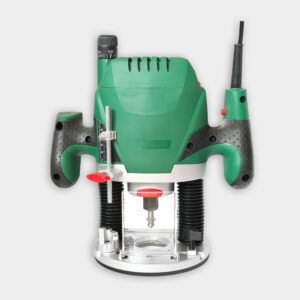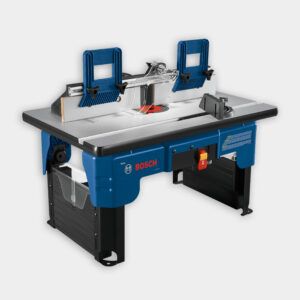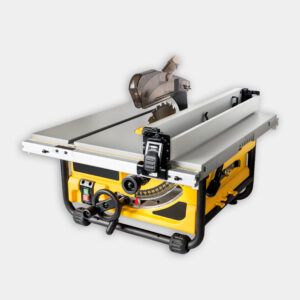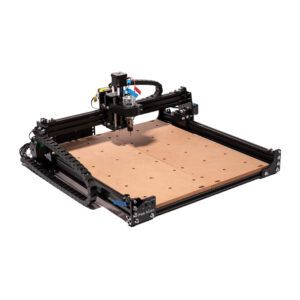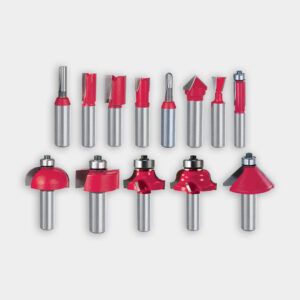We may be compensated if you purchase through links on our website. Our team is committed to delivering honest, objective, and independent reviews on home products and services.
Replicating historic or custom molding profiles can be a challenging but rewarding task for homeowners and woodworkers alike. Whether you’re restoring an old house or simply want to match existing trim, creating authentic reproduction moldings is a valuable skill. In this article, we’ll explore various methods for replicating molding profiles, from simple router techniques to more advanced custom knife-making processes. This Old House general contractor Tom Silva also demonstrates several techniques in the video above.
Understanding Molding Profiles
Molding profiles are the cross-sectional shapes of trim pieces used in architectural woodwork. These profiles can range from simple curves to intricate designs that add character and style to a room. Their versatility allows for creative applications in various architectural details that enhance the overall ambiance of interior spaces. Before attempting to replicate a molding profile, you must understand the different types and their practical applications in both restoration and renovation.
Common Molding Profiles
There are several popular molding profiles that you’ll encounter in both modern and historic homes, including the following:
- Baseboard: Installed at the bottom of walls.
- Casing: Surrounds doors and windows.
- Chair rail: Horizontal trim placed about one-third of the way up a wall.
- Crown molding: Used where walls meet the ceiling.
- Picture rail: Installed near the top of walls for hanging artwork.
These profiles can serve both decorative and functional roles, providing visual transitions between surfaces and protecting walls from damage.
Measuring and Documenting Existing Profiles
Before replicating a molding profile, you must accurately measure and document the existing piece. This process involves:
- Taking precise measurements of the molding’s width and height.
- Creating a detailed sketch of the profile shape.
- Photographing the molding from various angles for reference.
- Making a template using cardboard or thin wood if necessary.
Effective documentation will facilitate accurate replication and aid in selecting or modifying tools needed for the task. This step is crucial for achieving results that complement existing architectural features.
Using a Router To Replicate Molding Profiles
One of the most accessible methods for replicating molding profiles is using a router with matching bits. This technique is ideal for simpler profiles or when you need to create a small amount of custom molding. Maximizing the router’s capabilities will enable you to produce high-quality moldings tailored to specific design needs.
Select the Right Router Bit
Do the following to replicate a molding profile using a router:
- Examine the existing molding and identify the basic shapes that make up its profile.
- Select router bits that match these shapes or come close to the desired profile.
- Consider using a combination of bits to achieve more complex profiles.
Choosing the appropriate bits requires careful analysis of the molding’s shape and scale. Matching the contours as closely as possible ensures aesthetic consistency across the finished project.
Set Up Your Router
Once you have the appropriate bits, follow these steps to set up your router:
- Install the chosen bit into the router collet.
- Adjust the depth of the bit to match the profile depth of the original molding.
- Set up a fence on your router table, or use a guide for handheld routing.
- Make test cuts on scrap wood to fine-tune your settings.
Proper setup is crucial for achieving clean, accurate cuts. Consistent and careful adjustments will ensure your final product aligns harmoniously with existing moldings.
Make the Cuts
With your router set up, you can begin creating your custom molding. Follow these steps:
- Start with a piece of wood slightly wider and thicker than your final molding dimensions.
- Make multiple passes, gradually increasing the depth of the cut.
- Use push blocks to safely guide the wood through the router.
- Sand the finished piece to remove any rough edges or imperfections.
In the video, Tom demonstrates how a router can effectively replicate certain molding profiles, showing that with the right bit, you can achieve a close match to the original. Observing best practices in safety and technique will enhance both the quality and experience of the routing process.
Using a Table Saw With Molding Cutter Heads
For those with access to a table saw, using molding cutter heads can be an efficient way to replicate profiles. This method allows for more versatility in creating custom shapes and accommodating intricate designs that require precise attention to detail.
Select Molding Cutter Heads
Follow these steps to use this method:
- Purchase a molding cutter head that fits your table saw’s arbor.
- Choose individual cutters that match or closely resemble the profile you want to replicate.
- Ensure you have a variety of cutter shapes to mix and match for complex profiles.
Investing in a range of cutter heads can maximize the creative and functional potential of your table saw, providing a versatile toolkit for various projects.
Set Up Your Table Saw
Proper setup is crucial for safety and accuracy. You must do the following:
- Remove the standard saw blade and install the molding cutter head.
- Adjust the height of the cutter head to match the profile depth.
- Set the fence to control the width of the cut.
- Install any necessary safety guards or featherboards.
A well-prepared saw can significantly improve the efficiency and quality of your molding production. Attention to setup details can help prevent unnecessary material waste and enhance safety during use.
Create Custom Moldings
With your table saw prepared, follow these steps to create your moldings:
- Use a piece of wood that’s slightly oversized for your final molding dimensions.
- Make a test cut on scrap wood to check the profile and adjust as needed.
- Feed the wood through the saw slowly and steadily.
- Make multiple passes if necessary to achieve the desired profile depth.
In the video, Tom demonstrates how a molding cutter head on a table saw can efficiently produce custom profiles, showing the versatility of this method for home woodworkers. Mastering these techniques can expand your ability to replicate or innovate unique molding designs.
Custom Knife-Making for Complex Profiles
Custom knife-making may be the best solution for highly ornate or unusual molding profiles. This method involves creating a template of the profile and having custom knives made to match. Investing time in this process can yield precise results that enhance architectural detail through high-caliber craftsmanship.
Create a Profile Template
Follow these steps to create an accurate template:
- Make a clean crosscut through a section of the original molding.
- Place a piece of paper in the saw kerf.
- Carefully trace the profile onto the paper.
- Ensure the tracing is as accurate as possible, as you’ll use this to create the custom knives.
Accurate tracing requires meticulous attention to every curve and line, laying the groundwork for a successful knife-making process. This attention to detail is vital in preserving the integrity and beauty of intricate molding designs.
Order Custom Knives
Once you have your template, do the following:
- Contact a machine shop or custom knife-maker.
- Send them your traced profile, either by fax or mail.
- Specify the material and dimensions of the knives you need.
- Discuss any special requirements or considerations for your project.
Collaborating with experienced craftspeople helps in realizing designs that demand specialized skill and equipment. Custom knives tailored to your specifications offer flexibility in matching or reviving historical styles.
Use a Molding Machine
With your custom knives in hand:
- Mount the knives into a molding machine.
- Adjust the machine’s settings to match your wood dimensions and desired profile depth.
- Run test pieces to ensure the profile matches your original.
- Produce as much molding as needed for your project.
Tom shows how this method can produce exact replicas of even the most intricate molding profiles, demonstrating the process from tracing to the final product. Embracing this advanced technique can transform complex undertakings into attainable projects, projecting your expertise in woodworking.
Tips for Successful Molding Replication
To ensure the best results when replicating molding profiles:
- Always prioritize safety when working with power tools.
- Consider the wood species of the original molding for the best match.
- Take your time to set up and adjust your tools properly.
- Use high-quality wood that’s straight and free of defects.
- Apply appropriate finishes to match the look of existing moldings.
Attention to detail in every phase ensures that your new moldings will not only replicate existing ones but also stand up to scrutiny and time. Such dedication supports a consistent alignment in restoration and new construction.
